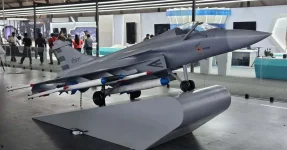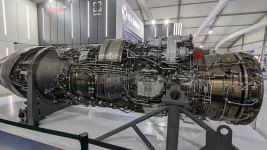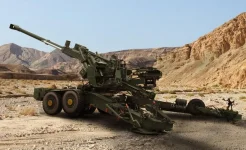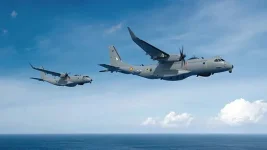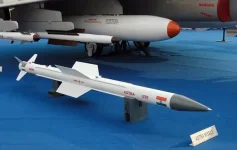India’s Aeronautical Development Establishment (ADE), a key laboratory of the Defence Research and Development Organisation (DRDO), has put forward a proposal for two distinct designs under its new High Altitude Long Endurance (HALE) unmanned aerial vehicle (UAV) program.
The two proposed variants, one featuring a Y-Tail configuration and the other a Single Engine Twin Boom (SETB) design, aim to provide the Indian armed forces with versatile platforms for a wide range of strategic missions.
This dual-design approach is intended to equip the military with tailored solutions for different operational needs. Both drone variants are being developed as critical strategic assets capable of conducting persistent Intelligence, Surveillance, Target Acquisition, and Reconnaissance (ISTAR) operations.
Furthermore, they are designed to execute precision strikes using a formidable suite of weapons and payloads.
A key feature of both proposed drones is the use of the proven TPE-331-10 turboprop engine, which produces 940 horsepower.
This is the same powerplant used in the Hindustan Aeronautics Limited (HAL) HTT-40 Basic Trainer Aircraft, a decision that promotes logistical commonality and simplifies maintenance and supply chains for the armed forces.
Despite their different airframes, both designs will feature six external hardpoints for carrying weapons or specialized pods.
While sharing a common engine, the two variants differ in structure and capacity to meet specific mission requirements.
- The Single Engine Twin Boom (SETB) variant is designed for heavy-duty, long-duration missions. It has a maximum all-up weight (AUW) of 5,700 kg and can carry a substantial payload of 2,000 kg. Its performance specifications include a cruising speed of 390 kmph at altitudes over 35,000 feet, an operational range of 1,000 km, and an endurance of more than 25 hours.
- The Y-Tail variant is a lighter and more aerodynamically streamlined design, with an AUW of 4,800 kg. This configuration is optimized for agility and efficiency, making it suitable for missions that require a faster response and a lighter operational footprint without compromising on significant payload capacity.
Their mission flexibility is enhanced by their ability to carry a comprehensive suite of advanced sensors and systems. These include Electro-Optical/Infrared (EO/IR) sensors for high-resolution imagery, Synthetic Aperture Radar (SAR) for all-weather ground mapping, and a wide array of intelligence-gathering equipment for electronic and communications intelligence (ELINT/COMINT).
For offensive roles, the HALE UAVs will be capable of carrying precision-guided munitions such as Small Diameter Laser-Guided Bombs (SLGB), Joint Direct Attack Munitions (JDAM), and various anti-ship missiles.
Alternatively, these hardpoints can be used to carry pod-mounted sensor systems, further enhancing their reconnaissance capabilities.
The entire unmanned system will be operated from an advanced Ground Control Station (GCS), which will allow for real-time mission planning, remote piloting, and data analysis.
This program represents a significant leap for India, advancing its capabilities from the existing Medium Altitude Long Endurance (MALE) drones, like the TAPAS-BH-201, to a more strategic HALE class.
If successful, these UAVs will bolster India's indigenous defence capabilities, providing a powerful tool for long-range surveillance and national security.

